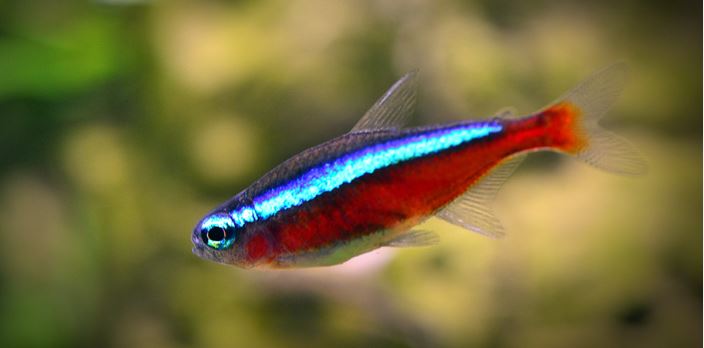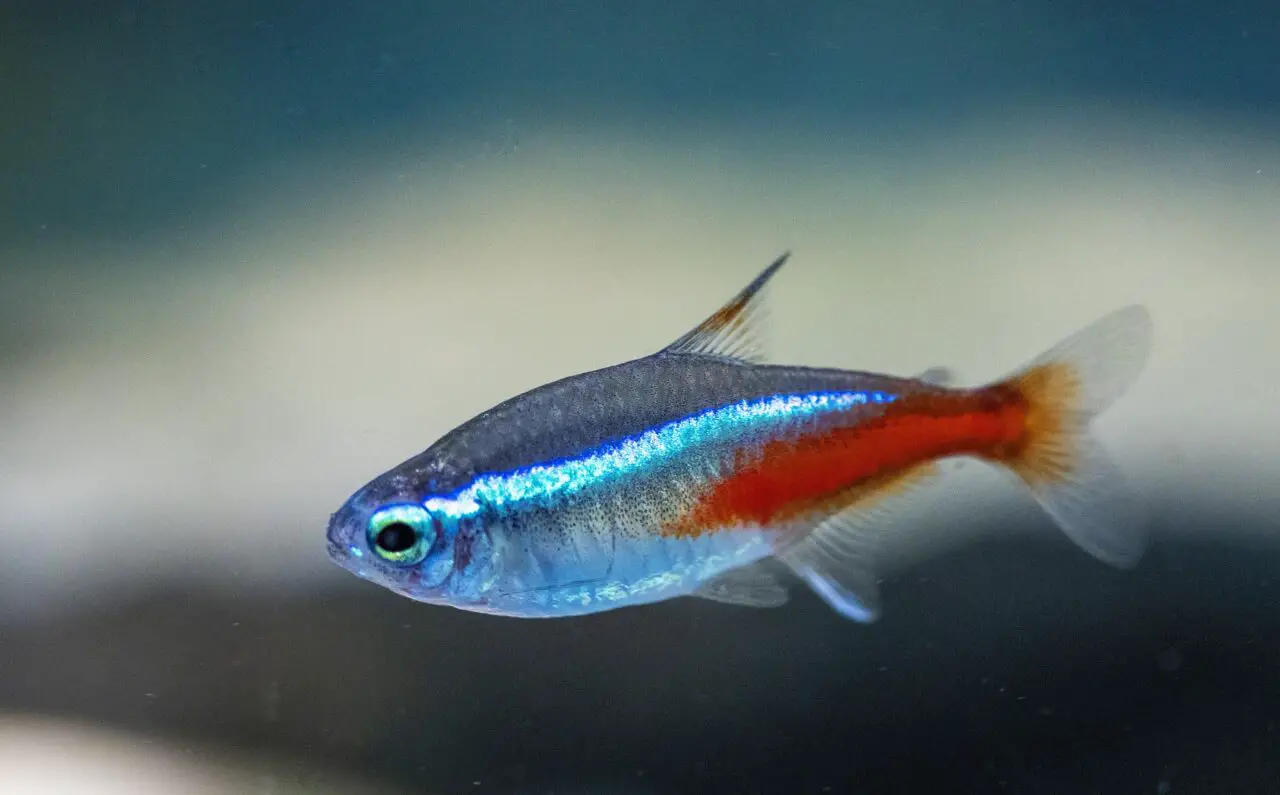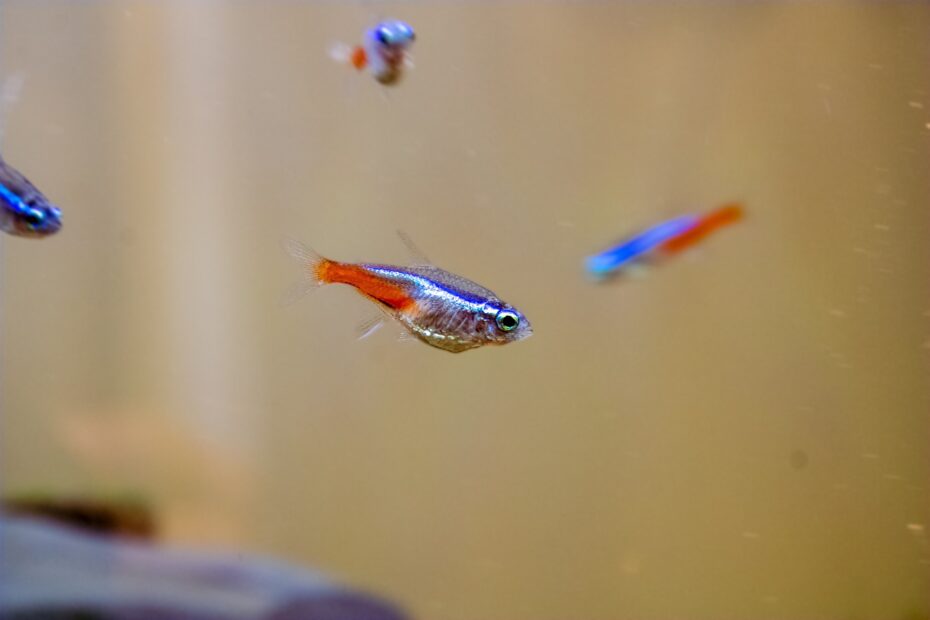Aquarium enthusiasts are constantly seeking vibrant and eye-catching fish to enhance the beauty of their aquatic habitats. If you’re looking to add a stunning splash of color to your tank, look no further than the Cardinal Tetra (Paracheirodon axelrodi). Known for its vibrant hues and peaceful nature, the Cardinal Tetra is a popular choice among aquarists.
In this article, we will explore the world of Cardinal Tetras, uncovering their physical characteristics, natural habitat, care requirements, and more. Let’s dive in and discover why this small fish is a true gem for any aquarium.
You may also want to know how to care for an axolotl.
Overview of Cardinal Tetra
The Cardinal Tetra is a freshwater fish native to the Amazon River basin in South America. It belongs to the Characidae family and is closely related to the popular Neon Tetra. With its striking colors and peaceful temperament, the Cardinal Tetra has become a sought-after species in the aquarium hobby.
Physical Characteristics
What sets the Cardinal Tetra apart is its stunning coloration. It displays a vibrant iridescent blue stripe that runs horizontally along its body, from the tip of the snout to the base of the tail. Below this blue stripe is a contrasting red stripe, which gives the fish its distinct appearance. The rest of the body is a shimmering silver, making the Cardinal Tetra a true visual delight.

Natural Habitat
In the wild, Cardinal Tetras inhabit slow-moving and heavily vegetated blackwater rivers and streams of the Amazon Rainforest. These waterways are characterized by their acidic and soft water conditions, with minimal light penetration due to the dense canopy above. Understanding the Cardinal Tetra’s natural habitat is crucial for recreating suitable tank conditions.
Tank Setup and Water Requirements
Creating a suitable tank environment is essential for the well-being of Cardinal Tetras. A tank size of at least 10 gallons is recommended for a small school of these fish. It’s important to mimic their natural habitat by incorporating plenty of plants, driftwood, and leaf litter. Maintaining stable water parameters is crucial, including a temperature range of 72-82°F (22-28°C), pH level around 5.5-7.0, and soft water with a low hardness.
Cardinal Tetra Diet
Cardinal Tetras are omnivores and will readily accept a varied diet. Their diet should include high-quality flake or pellet food specifically formulated for tropical fish. Additionally, supplement their diet with small live or frozen foods such as brine shrimp, daphnia, or bloodworms.
Breeding and Reproduction
Breeding Cardinal Tetras can be a rewarding experience for dedicated aquarists. To encourage breeding, it’s important to provide suitable conditions such as soft and acidic water, optimal temperature, and a well-planted aquarium. The fish will scatter their eggs among fine-leaved plants, and the parents should be removed after spawning to prevent them from consuming the eggs. The eggs typically hatch within 24 to 48 hours, and the fry can be fed with infusoria and later transitioned to finely crushed flake foods.
Compatible Tankmates
Cardinal Tetras are peaceful fish that thrive in a community tank environment. They should be kept in groups of at least six individuals to promote their natural schooling behavior. When selecting tankmates, choose species that share similar water requirements and temperaments. Good tankmates for Cardinal Tetras include other peaceful community fish such as small tetras, rasboras, dwarf cichlids, and peaceful catfish.
Common Diseases and Health Care
Like any fish, Cardinal Tetras are susceptible to certain diseases. The most common health issues include ich (white spot disease), fin rot, and fungal infections. To prevent these ailments, it’s essential to maintain excellent water quality, provide a balanced diet, and quarantine new fish before introducing them to the main tank. Regular water testing and observation of the fish’s behavior and appearance can help detect any potential health issues early on.

Cardinal Tetra Behavior
Cardinal Tetras are known for their peaceful and schooling nature. They feel most comfortable when kept in groups, where they exhibit their natural schooling behavior. The shimmering blue and red stripes of a school of Cardinal Tetras create a mesmerizing visual display in the aquarium. Their peaceful disposition makes them suitable for community tanks, and they rarely show aggression towards other fish.
Tips for Keeping Cardinal Tetras
Here are some essential tips for keeping Cardinal Tetras happy and healthy in your aquarium:
- Maintain stable water parameters with suitable temperature, pH, and hardness levels.
- Create a well-planted tank with ample hiding spots and open swimming areas.
- Feed them a varied diet consisting of high-quality flake or pellet food supplemented with live or frozen foods.
- Keep them in a school of at least six individuals to promote their natural behavior.
- Regularly monitor water quality and address any issues promptly to prevent health problems.
Conclusion
The Cardinal Tetra is an exquisite addition to any aquarium, captivating enthusiasts with its vibrant colors and peaceful demeanor. From its stunning blue and red stripes to its graceful schooling behavior, this small fish brings a touch of elegance to aquatic environments. By providing suitable tank conditions, a nutritious diet, and companionship with compatible tankmates, you can create an ideal home for these captivating creatures. So, why not introduce the Cardinal Tetra to your aquarium and enjoy the beauty it brings to your underwater world?
FAQs
1. Can Cardinal Tetras be kept in a community tank? Yes, Cardinal Tetras are peaceful fish and can be kept with other small, non-aggressive species that share similar water requirements.
2. How many Cardinal Tetras should be kept together? To ensure their well-being and encourage natural schooling behavior, it’s recommended to keep Cardinal Tetras in groups of at least six individuals.
3. Can Cardinal Tetras tolerate high water temperatures? While Cardinal Tetras prefer slightly cooler water temperatures around 72-82°F (22-28°C), they can tolerate higher temperatures for short periods, but prolonged exposure to high temperatures may be detrimental to their health.
4. Are Cardinal Tetras suitable for beginners in the aquarium hobby? Yes, Cardinal Tetras are great for beginners.
5. How long do Cardinal Tetras typically live? When kept in optimal conditions, Cardinal Tetras can live for up to five years or even longer. Providing them with a suitable environment and proper care will contribute to their longevity.
6. Can Cardinal Tetras be bred in home aquariums? Yes, Cardinal Tetras can be bred successfully in home aquariums. By creating the right conditions and providing appropriate care, aquarists can encourage these fish to breed and witness the fascinating process of egg-laying, hatching, and raising the fry.
7. Do Cardinal Tetras require a heavily planted aquarium? While Cardinal Tetras appreciate the presence of plants in their tank, a heavily planted aquarium is not a necessity. Providing some plant cover, especially fine-leaved plants for spawning, along with open swimming areas will create a suitable and visually pleasing environment for these fish.
